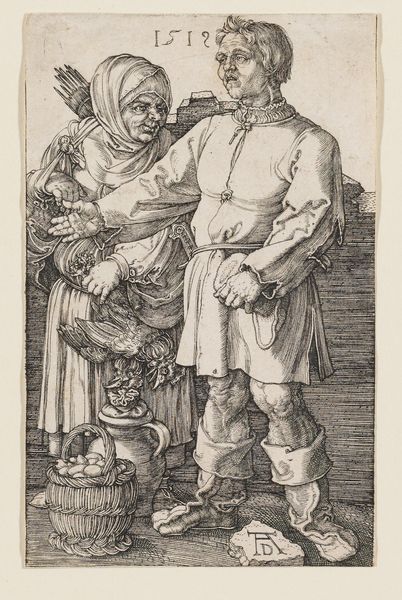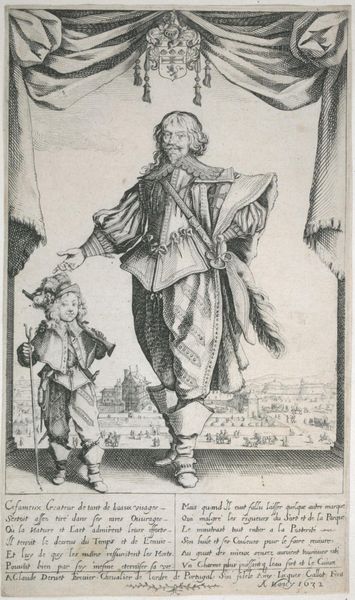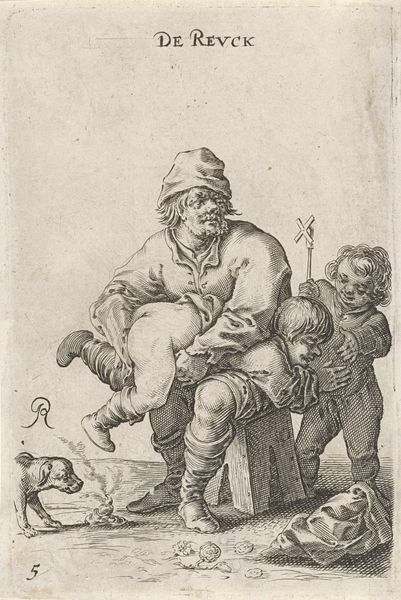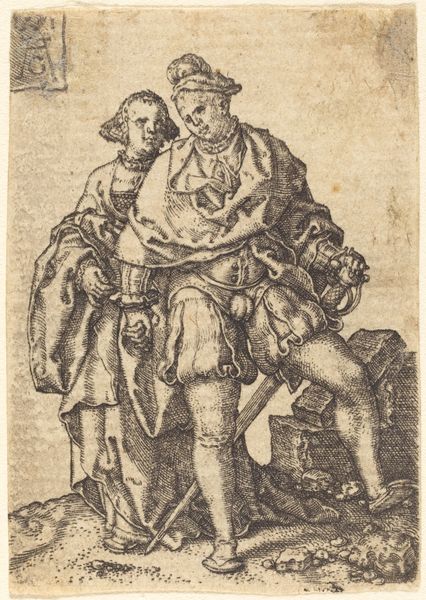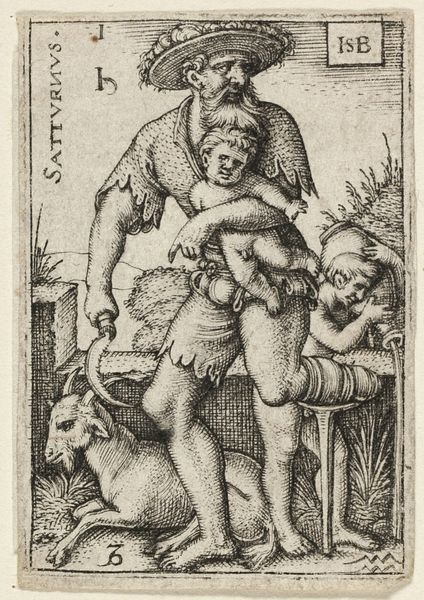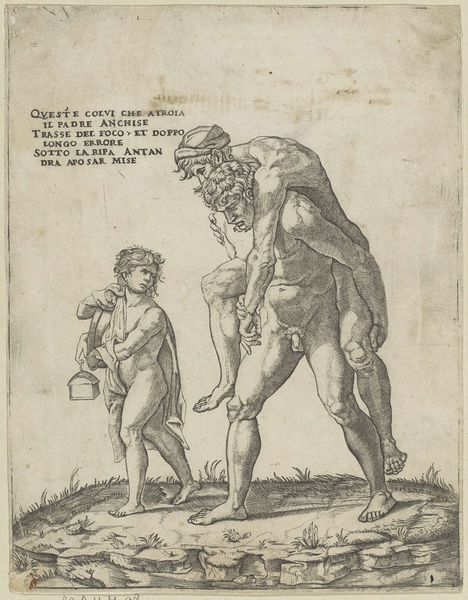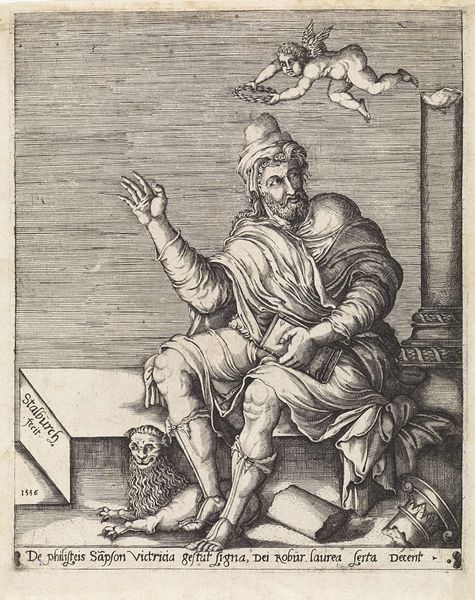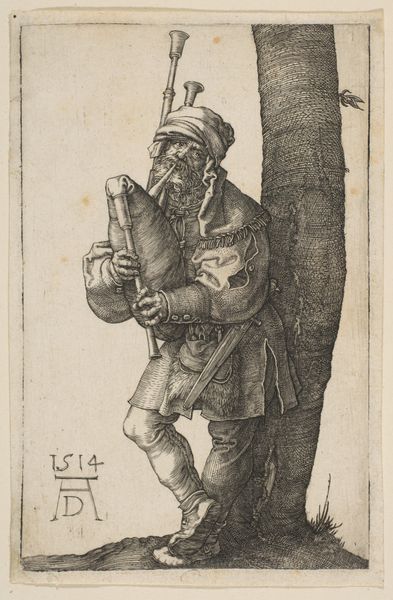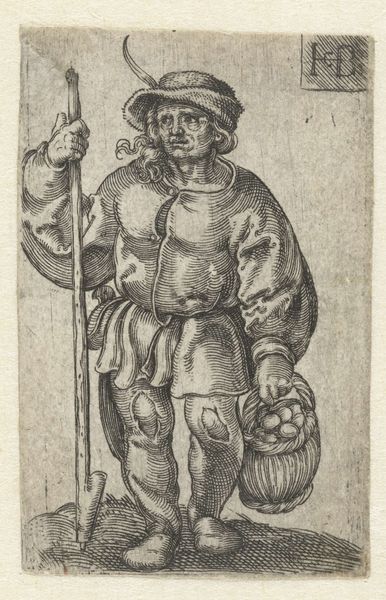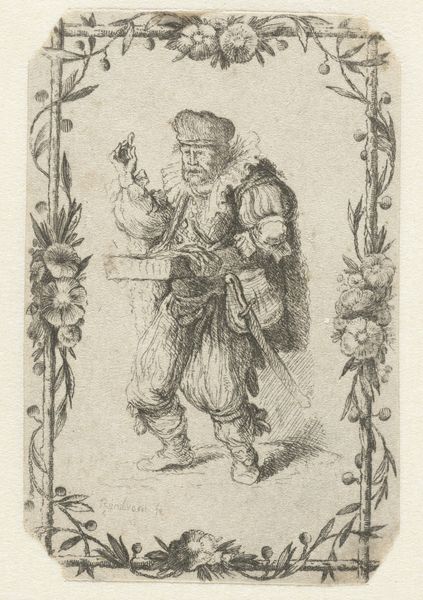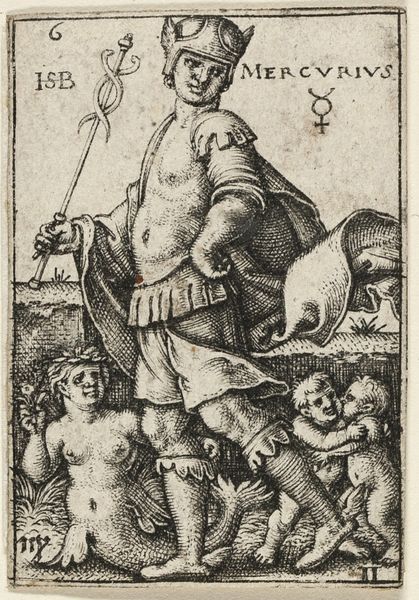
print, engraving
#
portrait
# print
#
pen sketch
#
figuration
#
history-painting
#
italian-renaissance
#
engraving
Dimensions: height 86 mm, width 55 mm
Copyright: Rijks Museum: Open Domain
Editor: Here we have Jacob Binck's "Joseph with the Christ Child", created sometime between 1510 and 1569. It's an engraving. I find the detail remarkable for a print; there is so much going on. What elements stand out to you in its composition? Curator: The power of this print resides within the starkness of its line work, doesn't it? Consider the contrasting textures - the softness implied in the beard against the almost metallic gleam of the drapery folds. Notice, too, the strong diagonal created by Joseph’s stance, bisecting the picture plane and countered by the upright posture of the child. How might you analyze the formal effects of these visual relationships? Editor: I see what you mean about the diagonals creating movement. And yes, those contrasting textures give it depth despite being black and white. Do you think the contrast is part of why it is compelling? Curator: Precisely. Note also how the artist employs line weight to achieve chiaroscuro effects. Thicker, darker lines create areas of shadow, lending a three-dimensionality, especially palpable on Joseph's robes. The linear perspective, while not perfectly accurate, contributes to a sense of depth that accentuates the symbolic weight of their figures against a minimalist ground. It begs the question of negative space becoming almost palpable, yes? Editor: The details certainly contribute to its depth, now that you point it out. But what would you say is most unique to this work, separate from everything else of its era? Curator: What interests me most in this work is its surface, because the quality of the lines does appear quite different than those by Binck contemporaries; while other pieces often exhibit hatching and cross-hatching that work for both shade and form, this image, though much less tonal, is all the more evocative. In fact, the relative "emptiness" in the plane amplifies the presence of each mark that makes it to the print! Editor: That's so interesting. Thank you for helping me look at it in such a structural way. It gives me a totally different lens to appreciate it.
Comments
No comments
Be the first to comment and join the conversation on the ultimate creative platform.
